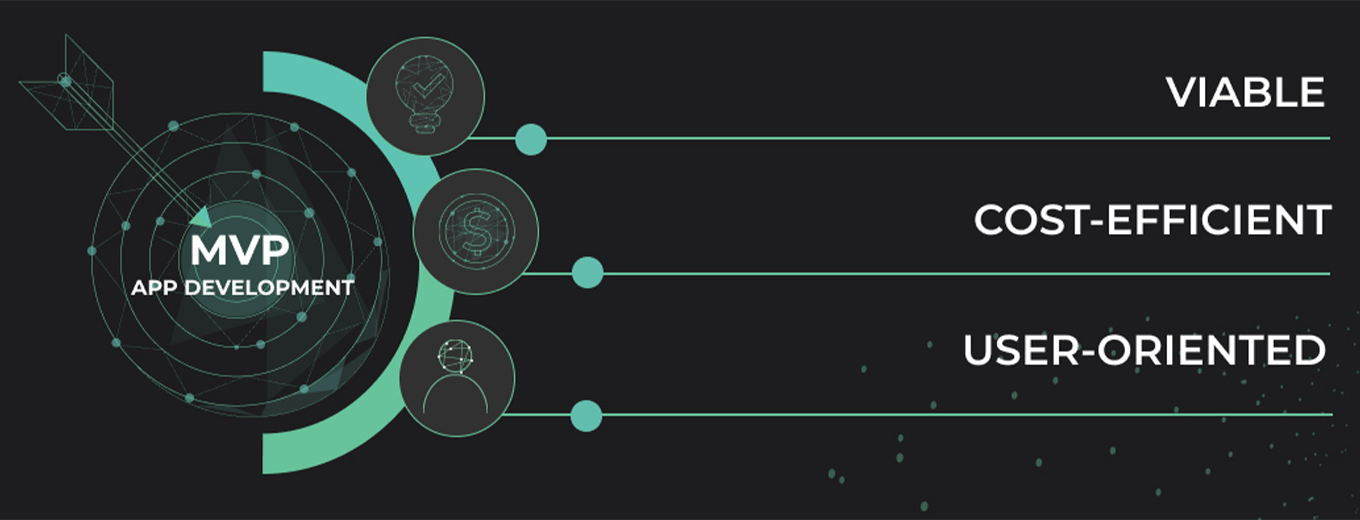
Svitlana Rakova
СОО



Startups always start with an idea – it is an important engine of progress. Otherwise, aspiring entrepreneurs are in precarious positions and have very limited resources. Nevertheless, we have good news for you. There is no need to spend much money on software development or hire a technical co-founder immediately. The best thing you can do is hire a dedicated team of professionals to develop an MVP (Minimum viable product). MVPs greatly reduce your software’s failure risk and allow you to create an effective end product that is useful to users and matches perfectly with your original ideas and goals.
You have a software idea that would help your company grow and develop. You immediately set out to develop it, think through the functionality and design, and bring it to market. But your expectations were not met, your product didn’t attract your customers’ attention, and you had to redesign it from scratch. This takes a lot of time and money since the developers will have to deal with a long code and a lot of extra information. As a result, you lose your most valuable resources: time and money. To avoid this, startups are better off turning to MVP development services.
A minimally viable product is a minimal version of your software. It allows you to test your initial idea and either confirm its effectiveness or disprove it. In the second case, it will be easier for you to change your approach and quickly correct any errors. The first version of the proposal is released for general use to test it and collect the necessary feedback from users. Once you have this information, it will be much easier for you to move forward.
MVP first came across in 2011 and has been actively used in business ever since. The features of MVP are:
Many startups are starting right now, but not all succeed in making it to market as stable companies. Statistics show that 20% of all startups fail to survive their first year for various reasons. The inefficient use of their resources in software development is a serious weakness for a startup business. However, if you successfully apply MVP software development, you can increase your presence and profitability. Below, we highlight the main benefits of using MVP for business:
All of the above advantages of an MVP make it a great option for startups, allowing them to manage their resources more efficiently and create a decent technical solution.

To create a quality minimally viable product, company founders must work well with the development team. To do this, they need to take the following steps.
Even if you have an idea for software, your subjective opinion must also converge with your customers’ needs. In other words, you should create something useful in a particular niche. Your proposal doesn’t have to be super-unique, but you must thoroughly research the market to see if it fits the needs of the majority. To know that your idea will be useful, it must meet certain criteria:
It would help if you also used different metrics to measure the product. The percentage of active users, engagement metrics, etc., will let you know your idea’s relevance.
As mentioned before, the MVP should have a minimum set of features; therefore, you need to decide on a list of features that need to be implemented in the product initially. You will be able to make the necessary adjustments as the company grows. The MVP also allows you to test your project and make changes easily. If you are launching an application with many features, you will have to change many things all at once, and you may not even need the features you paid for.
Once you have implemented the initial features in your software, you need to decide how to fill your product next. Creating a roadmap that clearly shows you what you want, what your capabilities are, and how to make them converge, will give you a leg up. Please take a close look at the expected impact of your product and what effort you need to put into it. After that, you can divide the features into mandatory, useful, and unnecessary.
The goal of a minimum viable product is to check its demand level in the market and evaluate potential profit. You can improve your product step-by-step before releasing the finished version to get the most out of it. The crucial thing when developing an MVP is not to go overboard with features. You should incorporate a few features from each component, needed for successful software. Take care of usability and reliability as well.
At the end of the development cycle, you should look back at the result and evaluate it. Feedback is very important during this process. And when you gather the necessary information, you should use it to improve your software further.
You have successfully created a minimally viable product, but what happens next? Next, your product will gradually transform and absorb new features that will open up more and more possibilities for you. For example, the next stage of the MVP will be concepts such as:
A minimally marketing product allows you to meet the requirements of your target audience. It allows you to monetize your solution and tracks feedback from customers willing to pay for your services.
The attractiveness of your software is tremendously important because that way, many more users will notice it and start spreading the word about you to others. Your product should be not only functional, but also enjoyable-to-use. Work on the attractiveness of the design so that your MVP becomes a minimally lovable product.
The MMF should contain value-added features that help you solve user problems more effectively than your competitors. A minimally marketable feature will allow you to become more promising in the eyes of your investors. All of this has a direct impact on your revenue and customer loyalty.
You’ll need to track popular key performance indicators to successfully bring all of these components together to create an effective end product. With their help, you can measure your success after the software launch.
We all start somewhere. MVPs are a great way to get started in the business world, and there’s plenty of evidence of this because many of the best-known companies started with a minimally viable product.
Amazon began its journey by selling books at low prices on a simplified website. Gradually, the company’s arsenal expanded to become the hub of sundries as we know it today.
You might be surprised, but the first versions of the iPhone didn’t even have basic features like copying text, searching, or transmitting a photo via text message. The company gradually introduced these and many other features, learning their demand from the customer.
The creators of Dropbox wanted to see if people would be interested in the concept, so they released their MVP before building an entire hardware infrastructure. The file sync idea proved to be more than a winner, and the creators, in turn, didn’t lose a ton of time and effort.
Thus, by using a minimum viable product, companies will save a lot of resources on software creation. By spending less, you discover more information for further work and improvement. With an MVP, your idea will have a much better chance of success.
Comments